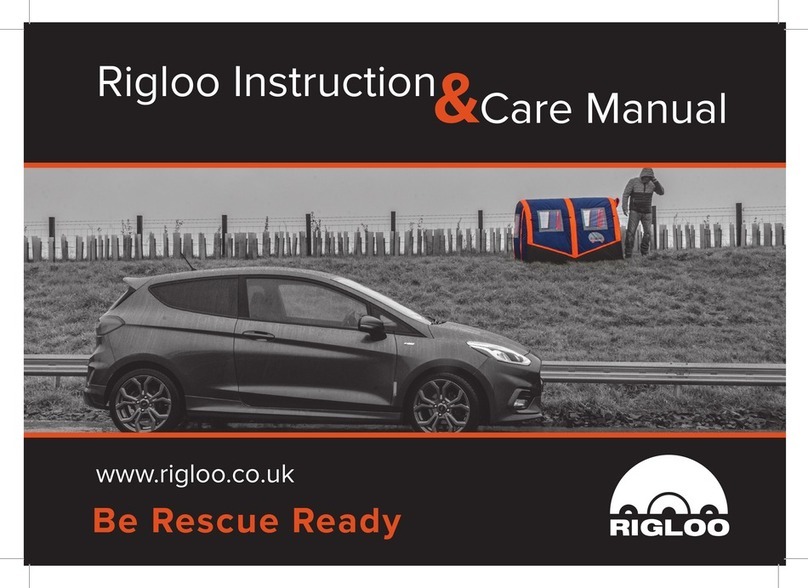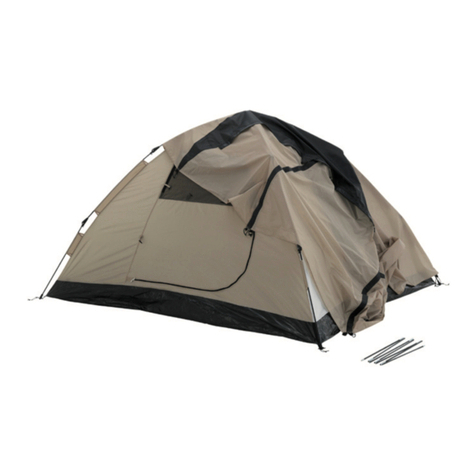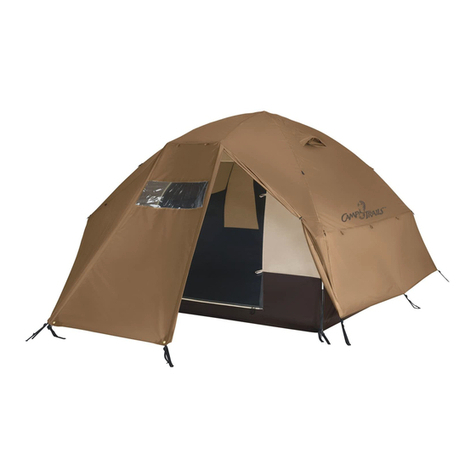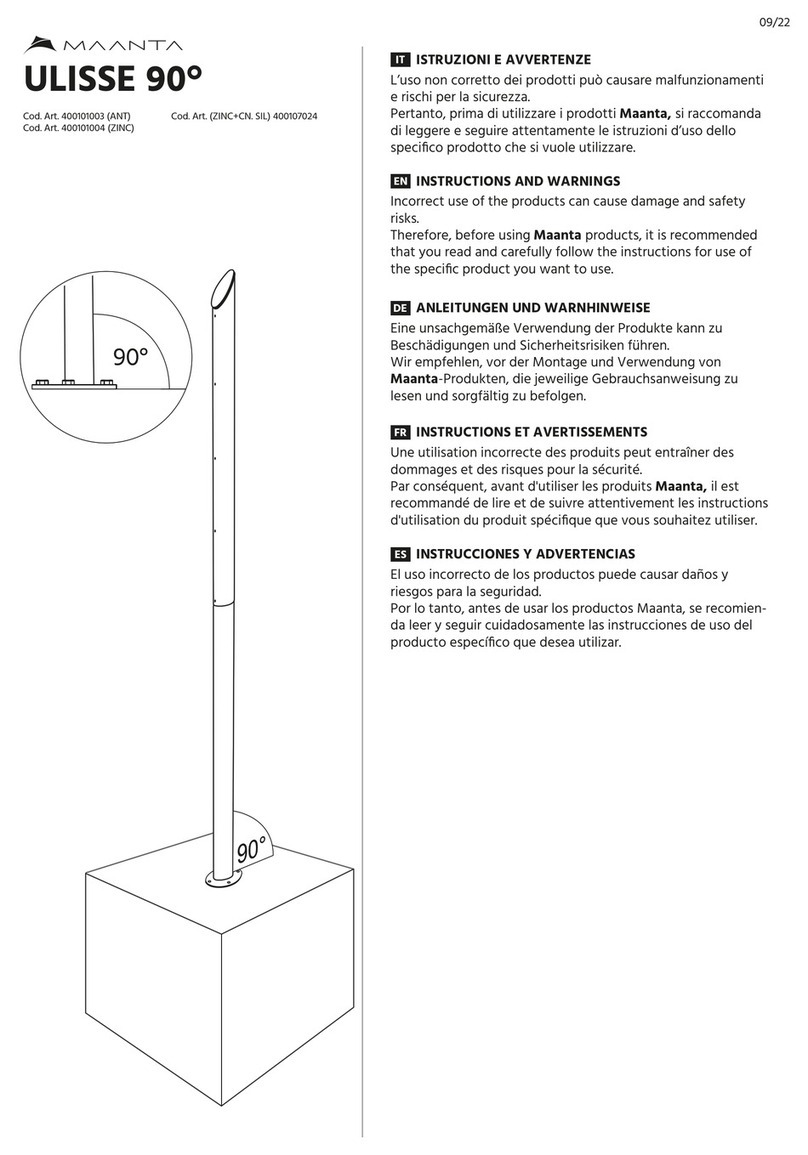PEGS
The Rigloo comes complete with general purpose pegs. These will be suitable for many sites but
there will be some instances where different pegs will be necessary. Your dealer will stock a range
of pegs suitable for different types of ground. For maximum effectiveness, pegs should be driven
into the ground at a 45°angle away from the pegging point.
RAIN
We make our Rigloo as resistant to the weather as possible. Occasionally you may find slight
leakage. This is not a fault with the manufacturing process or materials and can normally be
rectified by spot treating the seam with seam sealant (see below).
SEAMS
The main seams of this Rigloo have been factory taped to help prevent leakage. Over time it may
be necessary to treat the remaining seams with a seam sealant. Seam sealant should also be
applied to areas where the taping is damaged or has peeled away through wear and tear. It can
also be applied to areas where a leak may have developed. Seam sealant is available through all
good stockists.
SUITABILITY
This Rigloo is designed for use in moderate-poor weather. During very strong winds we
recommend that the Rigloo is not inflated on the top of a motorway verge. The Rigloo is designed
for temporary use up to 8 hrs and it is not recommended to leave unattended. Use loops and guy
ropes provided where necessary for increased stability during prolonged exposure to stronger
winds.
UV DEGRADATION
All fabrics can be weakened by prolonged exposure to sunlight. Under normal use your Rigloo will
give long service but use for extended periods in strong sunlight will soon cause deterioration. In
those cases it would be wise to use a site as shaded as possible. UV degradation is not covered
under the warranty. The warranty does not cover tents used on permanent sites, displays or for
commercial purposes.
CONDENSATION
Tents contain a high proportion of synthetic materials and under certain conditions will be effected
by condensation inside the tent. This should not be confused with leaking. Condensation can be
improved by ensuring adequate ventilation. The Rigloo has two doors and enough ventilation over a
short period to avoid this situation. Condensation and its effects are not covered under the
warranty.
SAFETY
DO NOT USE NAKED FLAMES IN OR AROUND THE RIGLOO. DO NOT PIERCE OR ABUSE
THE AIRFRAME.
DEFLATION
After a breakdown we recommend the Rigloo is bundled together and placed in the
vehicle roughly to allow the user a faster exit from the hard shoulder, back on their way.
To pack away the Rigloo:
1. Leave doors partially open to allow airflow to escape
2. Release valve to position 3, the Rigloo will instantly deflate
3. Fold excess material into main floor area
4. Flatten out the Rigloo and push air towards open valves
5. Un-peg at all points except the peg at the tether
6. Fold the Rigloo into 3 sections at the longest side to about 40cm (Backpack size)
7. Fold/roll the Rigloo towards the deflation valve to expel more air and fold to 30cm to fit in the
Backpack.
8. Ensure that the Rigloo is totally dry before storing in a cool, dry, dark space.
CARE
Air fully and ensure it is totally dry before packing away. Store in a well ventilated dry place. A
wet/damp Rigloo could develop mildew.
Dirty Rigloo can be washed using clean water and a soft brush. Do not scrub and never use
detergents.
The Airframe does not need any maintenance but should be protected from damage during
storage. Damage due to improper use, wind damage or neglect is not covered under the
warranty. Have any damage repaired at the first opportunity.
Zips should be treated with care, use two hands to close and open. Never force a zip. We
strongly recommend that you carry the puncture repair kit provided if planning more than one
use over a short period.
Repairs to the tent should be made by a company recommended by Rigloo or your supplying
dealer. Repairs and alterations made by an unauthorised company may invalidate your
warranty.























